Dragonfly – Part 1
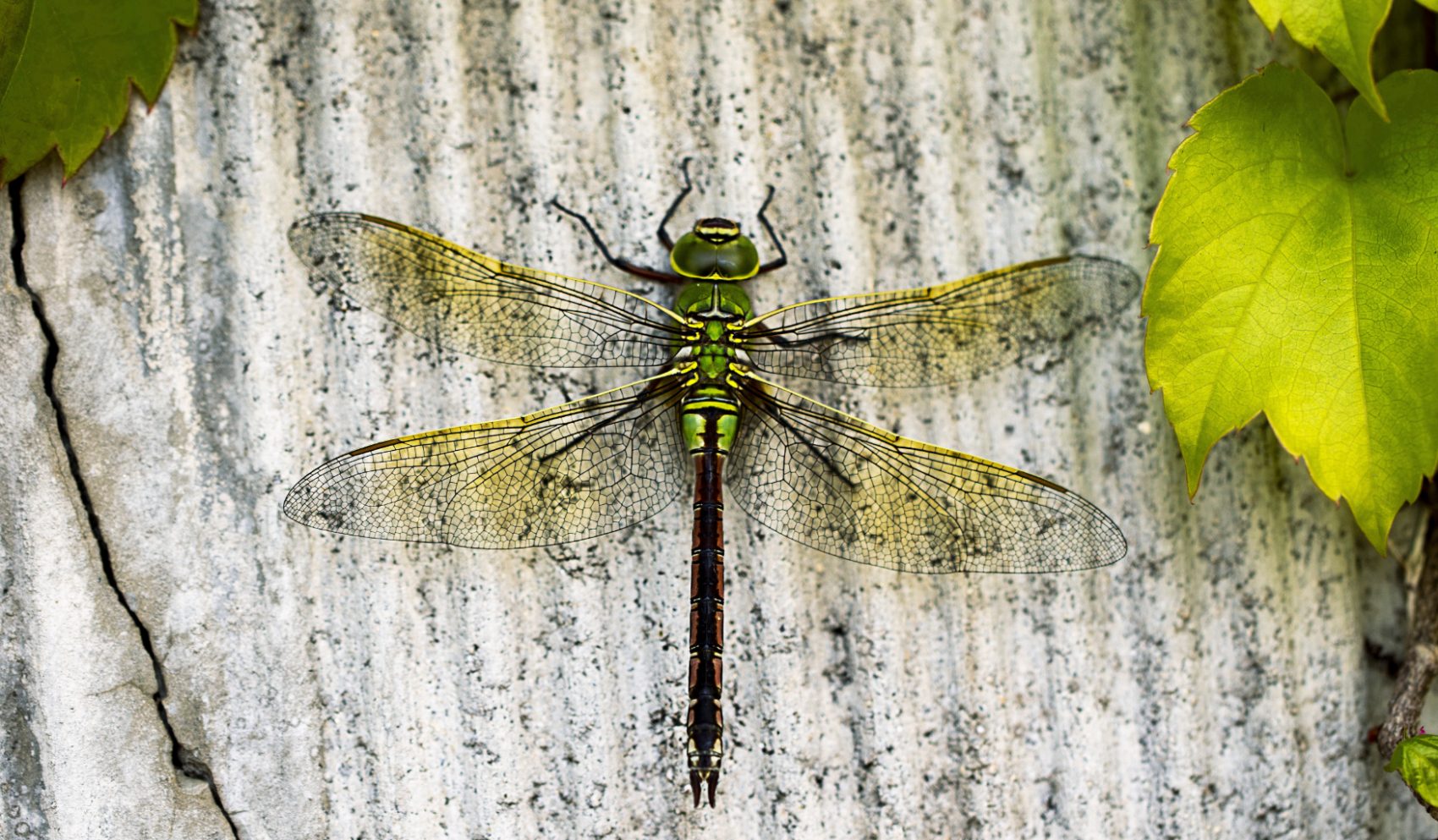
The magical, mystical world of Dragonflies may be more amazing than many of us realize. Dragonflies are members of the order of Odonata under the infraorder Anisoptera. The name Odonata translates from Greek as “toothed one”, although dragonflies do not have teeth. More about that later in an exploration of their physical prowess, which is really quite impressive.

The image above shows a fossilized dragonfly. Modern dragonflies have an average wing span of roughly up to 5” while their early relatives show wingspans in excess of 2 feet.
Fossilized remains of the largest-ever-known insect species are a dragonfly-like order called Meganisoptera. These giant insects, about the size of an eagle, were likely flying around in what is now North America and Europe about 350-280 million years ago. Measuring just over 3 feet long, they did not survive the reduction in the oxygen level on earth at that time in history.
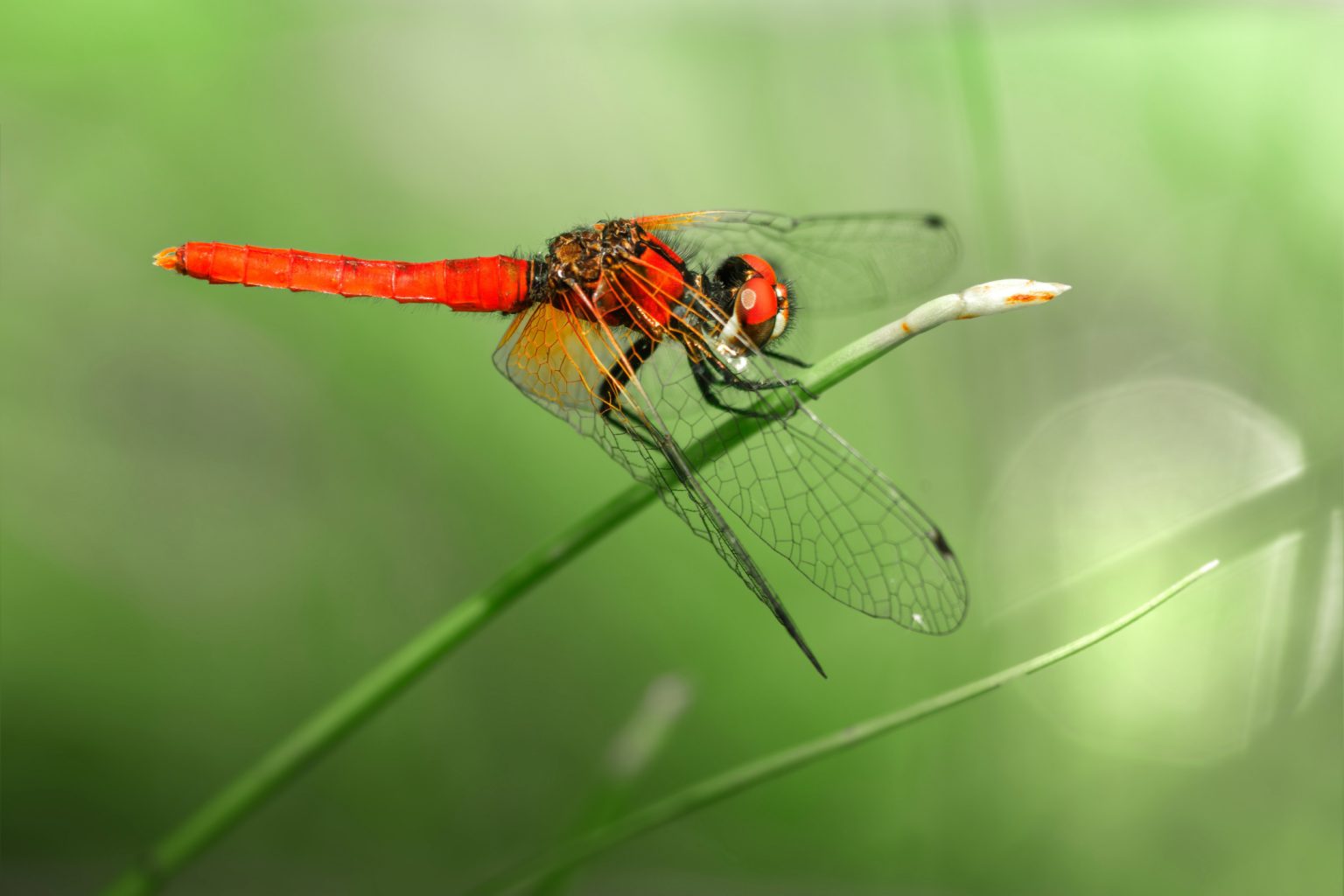
In modern times dragonflies have a smaller size with a bit of range. The “scarlet dwarf” (Nannophya pygmaea – pictured above) is native to Southeast Asia, China and Japan. These are the smallest dragonflies with a body length of about 0.59 inch and wing span of 0.79 inch.
The largest living member of the dragonfly species are the Tetracanthagyna plagiata with a body length of almost 4 inches and a wing span that reaches 6.5 inches. They are found throughout Sundaland (Southeast Asia) but also been sighted in Thailand, Peninsular Malaysia, Singapore, Sumatra, and Borneo.
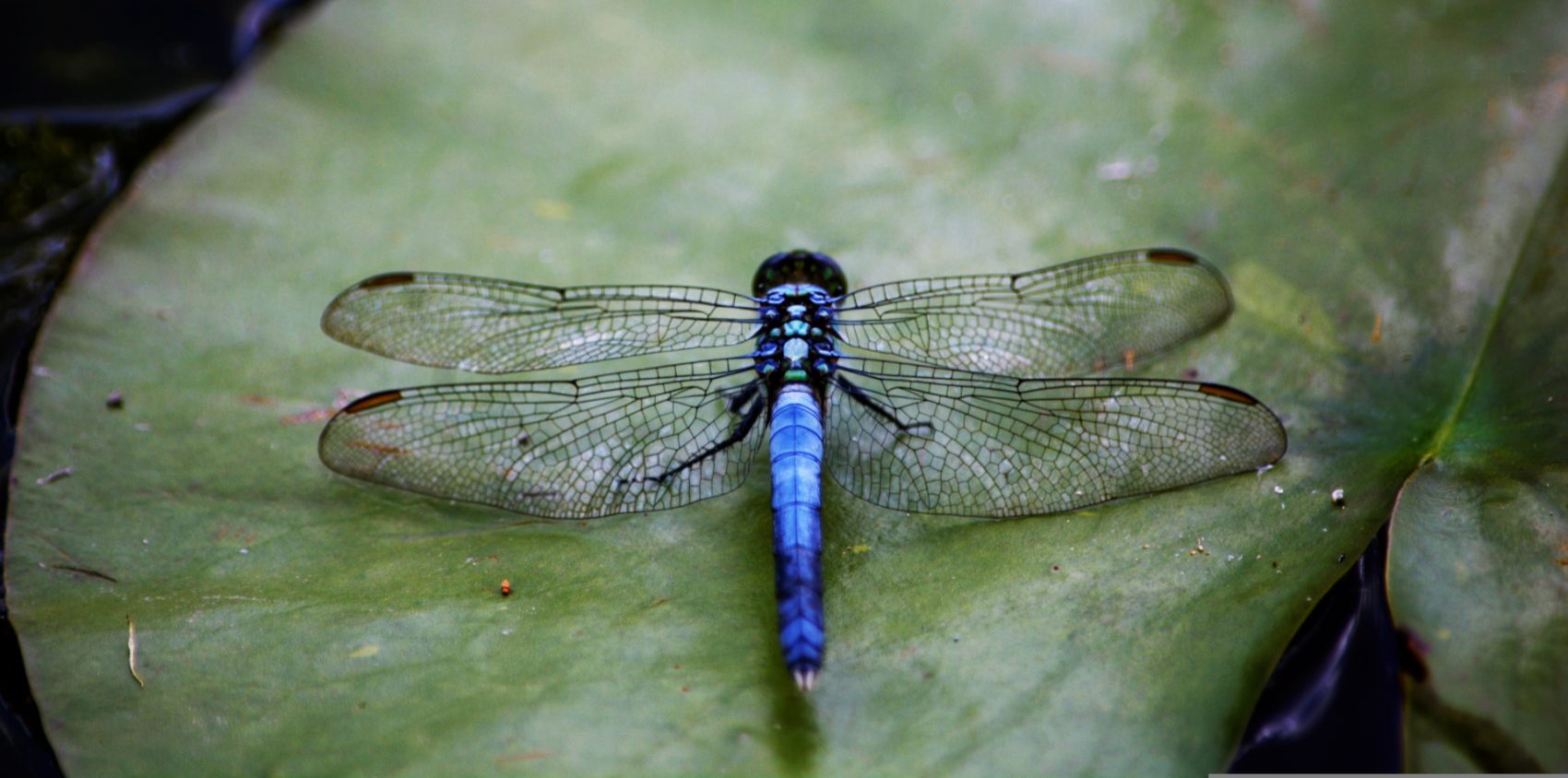
There are over 3,000 known dragonfly species with most native to tropical areas. They are wonderfully diverse but still recognizable with their long, needle-like bodies between two pairs of transparent wings. While most dragonflies are found near bodies of water, such as ponds, their habitat does vary with the species. Some dragonflies live in dry meadows only making their way back to wetlands in order to lay their eggs.

The majority of a dragonfly’s life is an aquatic one. The females lay their eggs on plants, rocks or other objects in or close to bodies of water. As babies, they live in the water in the form of larva and eat just about anything they can in that environment: other insects, tadpoles, fish, other larvae. This is 1–3-year phase typically, depending on their environment, amount of food, etc., but for some species it can last weeks or months while others can remain in the larvae stage for up to 5 years.
As the larval stage nears its end the nymph is nearing adulthood. The transformation into adulthood is a magical metamorphosis! As the newly formed dragonfly emerges from the water its exoskeleton cracks open. The abdomen is released, the four wings come out and its body needs a few hours to harden as it dries.
At that point everything speeds up and dragonflies “live fast”. From there the adult life span is typically only 1-3 weeks, with some exceptions of a little better than 2 months.
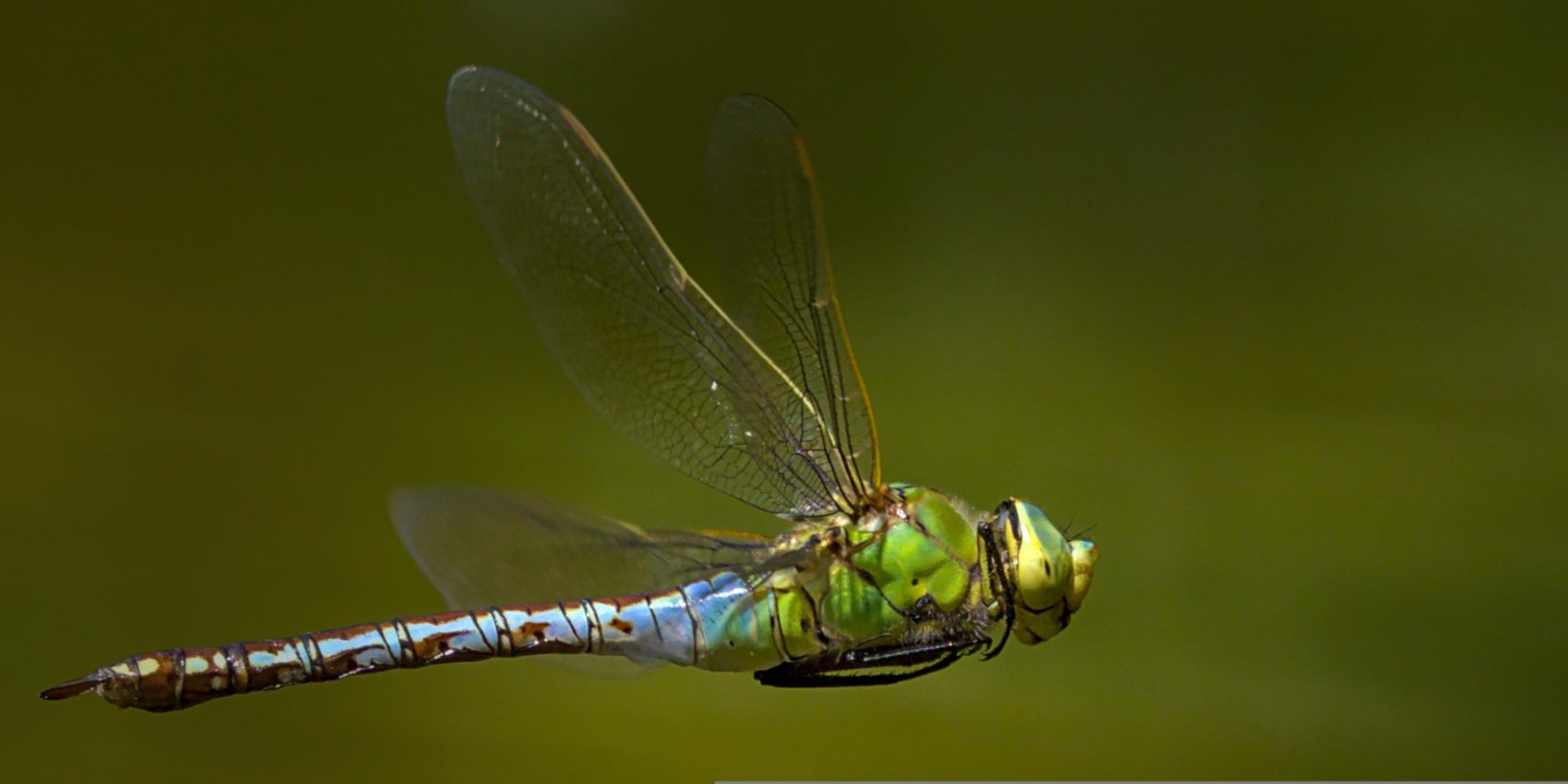
Dragonflies have captivated the imaginations of humans throughout the world with their incredible abilities. As one of the fastest flying insects, they can reach speeds of about 35 miles an hour. Not only that, they can fly forward and backward, straight up and down, hover in midair and even mate while hovering.
A group of research engineers, hoping to capture the secrets of the dragonfly flight and reproduce it in machines, used high speed cameras to study them. They found dragonflies angle their bodies vertically, at a 90-degree angle to the horizon, to fly backwards. Their 4 wings can move and twist independently to improve flight control.
These incredible flight abilities are crucial to their survival because they are only able to eat what they are able to catch while flying. Prey is captured with open mouths, in their mandibles or with their 4 specialized legs forming little baskets – they cannot alight while eating. Actually, dragonflies cannot walk, only perch.
Dragonfly efficiency rate of capture has been recorded in studies at a stunning 95% which is “wildly high” compared to most predators. Hawks, owls and even lion’s capture rates run about 25%.
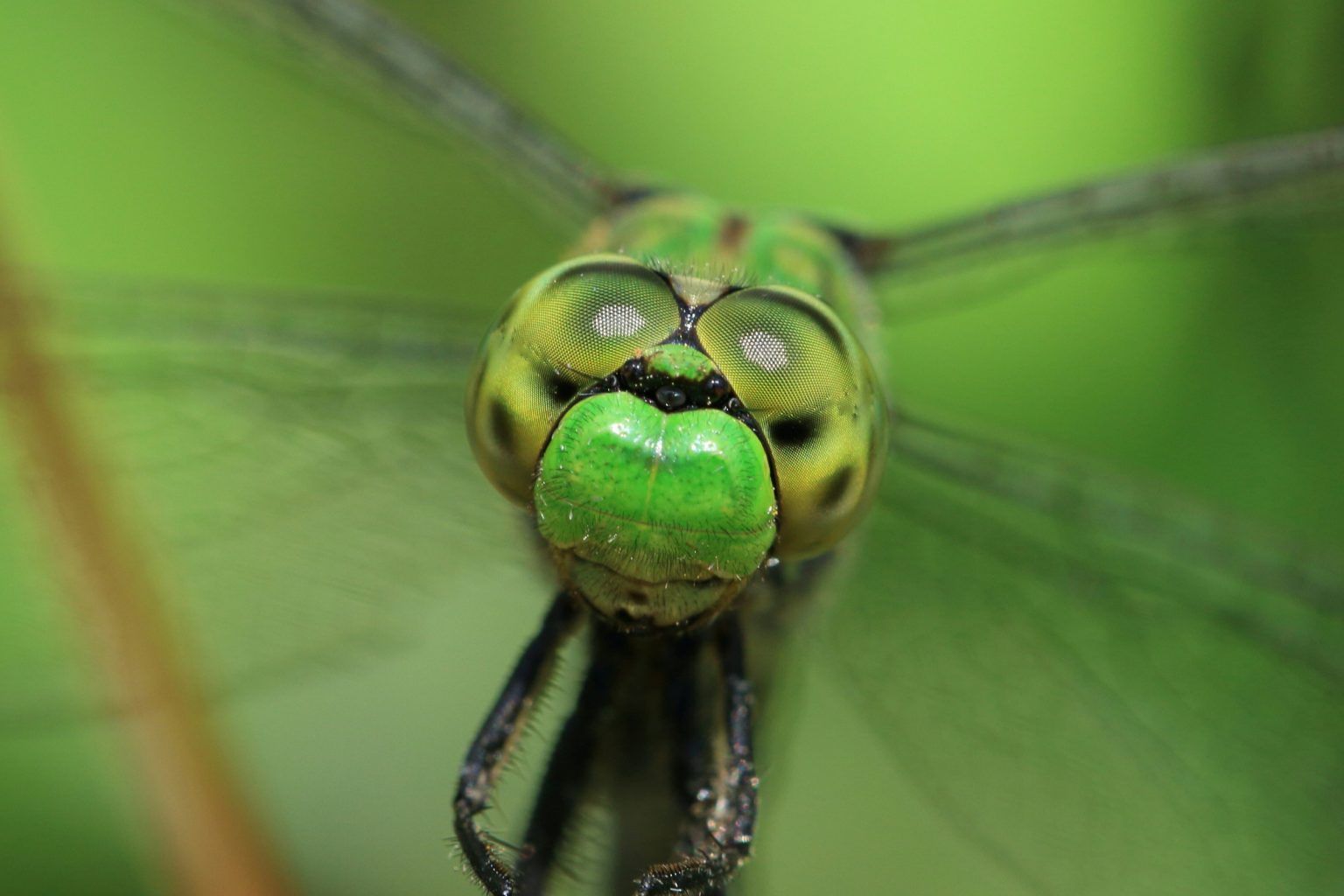
With a nearly 360-degree field of view, dragonfly’s two large, compound eyes have a stunning panoramic vision. The only angle that is difficult for them is directly behind. Actually, they have 5 eyes in total. The 2 compound eyes have up to 30,000 lenses in some species and 3 simple eyes which each have one light detecting lens.
For comparison, humans have 3 types of light-sensing cells which discern red, green and blue while dragonflies have 11-30 types of light sensing cells. Their supercharged vision allows for them to see ultraviolet colors and polarized light. Dragonfly vision is so acute they are probably able to separate individual wing beats which we would see as a blur.
The 2 little antennae are believed to measure wind direction and speed, perhaps providing a method of assessing their flight. But dragonflies cannot hear, have little ability to smell and do not make any vocal sounds.
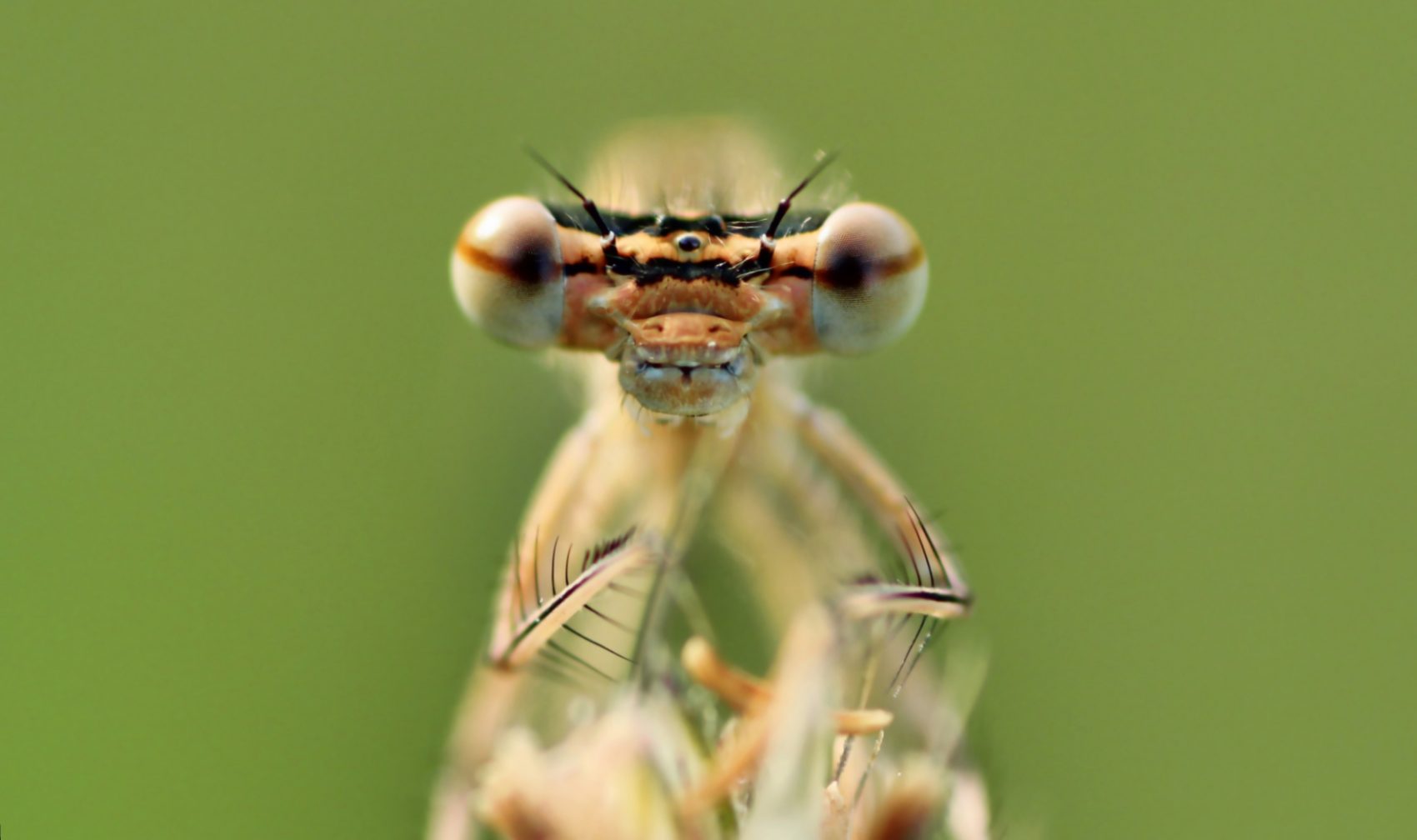
Dragonflies do not have teeth, but an “upper and lower lip” (sometimes classified as part of the face) work together to allow them to secure prey while the jaws do the chewing. The jaws work from side to side made up of a series of incurved “meat hooks”.
Contributing to their alien appearance, the mandible of the Odonates order is unique. They are the only insects in the world which have them. This structure makes them one of the most fierce predators in the aquatic food chains too.

Thankfully, dragonflies are kind to people and do not bite or sting. Some believe it is good luck if one lands on you. The next time you are near a wetland you may want to spend some time watching these colorful insects, a hobby known as “oding”.
